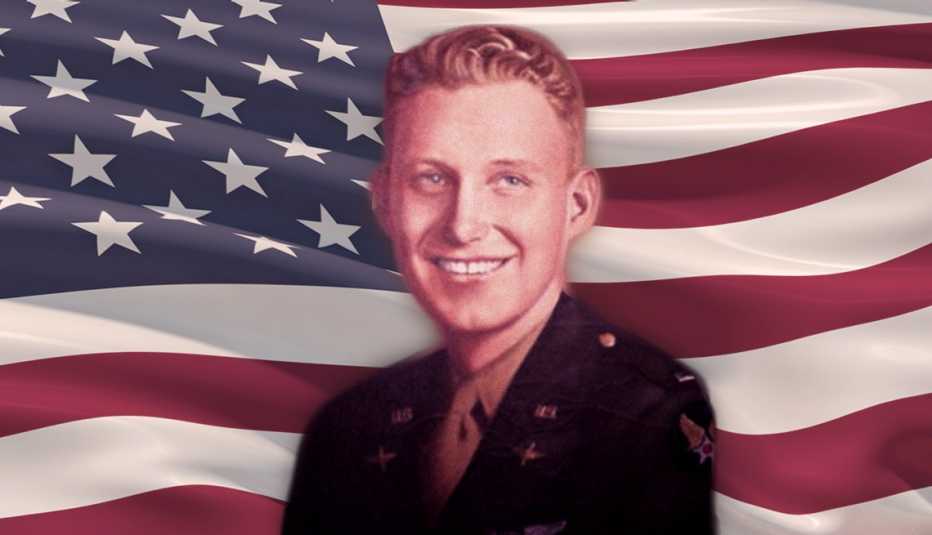Staying Fit


The sight of a flag-draped coffin bearing the remains of a WWII veteran is a sadly familiar one across America’s heartland as the last of the Greatest Generation leave us.
But when Carl Nesbitt was buried this year in Annville, Pennsylvania, he was not in his 90s having spent a productive life after returning home. The pilot had perished in Germany aged 23 a week before D-Day in 1944 and it was only now that his remains had been brought home to be laid to rest in American soil.


AARP Membership— $12 for your first year when you sign up for Automatic Renewal
Get instant access to members-only products and hundreds of discounts, a free second membership, and a subscription to AARP the Magazine.
Presiding over his funeral was his nephew, retired pastor Greg Seckman. “Last fall, I was contacted and they said they found the remains of my uncle and that they were going to bring him home with full military honors,” he told AARP Veteran Report.
“So I told my mom, who is 94, that they found her brother.” His mother cried, she said, remembering how her father had written repeatedly to the Department of Defense after Nesbitt’s plane had crashed, asking, “Have you found my boy?”
The fact that Carl Nesbitt was found and brought back to the United States is testament to the credo that the American military leaves no one behind.


You can subscribe here to AARP Experience Counts, a free e-newsletter published twice a month. If you have feedback or a story idea then please contact us here.
On May 29, 1944, Nesbitt, of the Army Air Forces’ 569th Bombardment Squadron, 390th Bombardment Group, was the pilot of the B-17 Flying Fortress “Yankee Doodle Dandy,” with a crew of 10, bombing enemy targets near Leipzig.
The plane was hit by enemy fighters and caught fire. By all accounts, Nesbitt saved the lives of six crew members who were able to parachute to safety. 2nd Lt. Robert Patterson, the pilot, Staff Sgt. Weldon Pillow, the radio operator, Staff Sgt. Joe Finch, the tail gunner, Staff Sgt. George Hauskins, the ball turret gunner, and waist gunners Staff Sgt. Lester Miller and Staff Sgt. William Striffler, all ended up as POWs.
“He was the key to the entire crew,” Jesse Hauskins, son of the ball turret gunner, said of Nesbitt in a television interview this year. “He’s holding that thing upside down with all his might to keep that plane in the air to give his buddies time to get out. And he did it. He did it.” The B-17 crashed near Horst, Brandenburg, Germany, with Nesbitt still at the controls.
The American Graves Registration Command, which recovered fallen service members in Europe after WWII, found the remains of a seventh crew member in September 1946 buried in a cemetery in Horst. He was Tech. Sgt. Lyle Larson, a turret gunner wounded by a .22 mm. shell whose parachute had failed to open.
But worsening relations with communist East Germany meant that further searches had to be abandoned and Nesbitt was declared “non-recoverable” on April 21, 1953.

































































More From AARP
Music and Memories: The Remakes That Still Make Us Smile
Even newer renditions of some of our favorite songs can reinvigorate the soundtracks of our livesHow to Score Big While Thrift Store Shopping
8 secrets of finding great gifts to give on the holidaysThe 10 Prettiest and Most Historic Houses of Worship in America
Stunning spiritual sanctuaries that epitomize religious inspirationRecommended for You